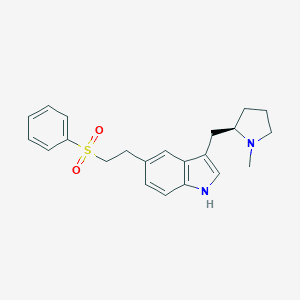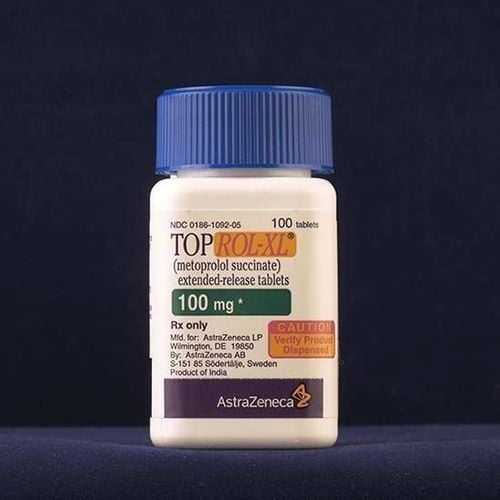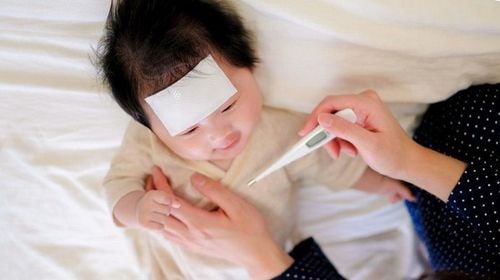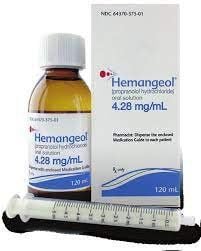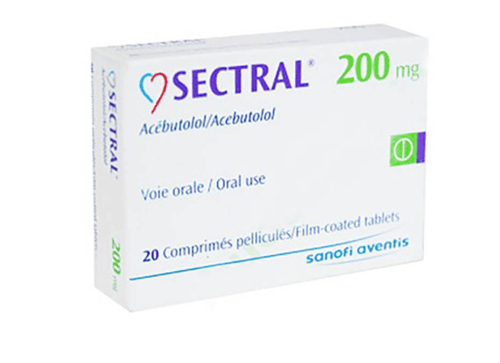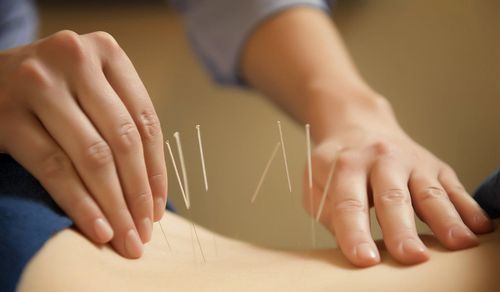This is an automatically translated article.
Migraine prevention or preventative treatment can help reduce or prevent migraine attacks. Prophylaxis may include preventive migraine medications, integrative therapies such as acupuncture and behavioral therapy, or a combination of both. In particular, migraine prevention drugs can help reduce the frequency and intensity of pain, improve quality of life.1. How can migraine prevention treatment help relieve migraines?
According to a 2019 article in the journal American Family Physician, about 38% of people with episodic migraines would benefit from preventive medications. However, in reality, less than 13% of patients are prescribed migraine prophylaxis.In addition, the article states that migraine prevention can help:
Reduce the frequency and severity of migraine attacks Reduce associated chronic pain Improve quality of life Prevent conversion to migraines chronic migraine Accordingly, migraine prophylaxis medications may be helpful for people with:
Four or more migraine attacks per month Migraine depression Overuse headaches medicine Migraine with hemiplegia Ocular migraine Migraine with prolonged aura
2. Migraine prophylaxis drugs
Effective first-line drugs for migraine prevention include:2.1. Beta blockers
Propranolol is a beta-blocker. It is one of the most popular and effective medications for migraine prevention.It may take 12 weeks for people to start feeling the benefits of propranolol. Dosage can be started by taking 40 to 160 milligrams (mg) and gradually increasing to 320 mg per day.
Common side effects of beta-blockers in general and propranolol in particular may include:
Fatigue Nausea Dizziness Dizziness Decreased exercise capacity Depression Furthermore, if the patient has additional underlying cardiovascular disease , your doctor may consider other beta blockers such as:
Timolol Atenolol Metoprolol However, beta blockers may not be suitable for people with the following conditions:
Severe asthma Peripheral vascular disease Heart rate Severe slowness Congestive heart failure
2.2. Anticonvulsants
First-line medications for migraine prevention include the following anticonvulsants:Divalproex Sodium valproate Topiramate Common side effects of Depakote and Sodium valproate include:
Nausea Drowsiness Hair loss Increased ammonia levels Depakote and Sodium valproate may be particularly useful for the treatment of persistent and atypical migraines. However, these two drugs are not suitable for people with severe liver disease or pancreatitis. In addition, Topamax and Sodium valproate are not suitable during pregnancy.
Topamax is as effective as propranolol for migraine prevention. People can start with 25mg per day and gradually increase to 100mg twice a day. It may take 2 - 3 months before the treatment is effective or not.
Common side effects of Topamax include:
Problems with memory and concentration Fatigue Nausea Loss of appetite Other possible side effects include:
Metabolic acidosis Kidney stones Angle-angle glaucoma close
2.3. Antidepressants
The antidepressant Amitriptyline may be more effective than Propranolol in the treatment of mixed migraine and tension headaches.Of which, Amitriptyline works faster than beta-blockers and patients can get the effect after up to 4 weeks at a dose of 20-75 mg daily.
Side effects may include:
Blurred vision Constipation Dry mouth Low blood pressure when standing or lying Increased risk of seizures Changes in heart rate Drowsiness Urinating
3. Other Ways to Prevent Migraines
3.1. Acupuncture
Acupuncture may help reduce the frequency and pain of migraines for some people.A 2017 study divided participants into an actual acupuncture group, a sham acupuncture group, and a acupuncture waitlist group. Participants in the real and sham acupuncture groups had 20 acupuncture sessions over 4 weeks.
Results where researchers found that people in the acupuncture group actually got significant benefits over the sham and waiting list groups. In particular, acupuncture was indeed effective in migraine prevention for at least 24 weeks and in reducing migraine frequency and intensity.
3.2. Massage
According to the American Massage Therapy Association, massage or massage can help people manage migraine pain. There is some limited research on the benefits of massage for migraines. However, some research shows that massage can help reduce the frequency and intensity of migraine attacks as well as tension-type headaches.3.3. Cognitive behavioral therapy
Cognitive behavioral therapy is a psychological technique that can help people manage their migraines. Research shows that this therapy and relaxation techniques can reduce the impact of headaches by 30 to 60 percent.A 2020 study organized participants to attend eight weekly cognitive-behavioral therapy sessions. The researchers took MRI scans before and after the study to show any changes in the brain. After 8 weeks, headache frequency decreased and scans showed changes in brain function and activity that may suggest a benefit of this drug-free approach in migraine prevention.
3.4. Biofeedback technique
Biofeedback devices monitor certain reactions in the body, such as muscle tension or skin temperature.When people change their response, such as releasing tension in a part of the body, the device provides feedback so everyone knows. A device may use a sound or light system to provide feedback.
By using biofeedback, over time people will develop an awareness of their reactions and will be able to release tension or tension in the body without the need for a device. Learning this skill can help reduce or prevent migraines.
3.5. Stimulation of subcutaneous nerve distribution by electrical impulses
A transcutaneous electrical nerve stimulator is a small device with pads attached to the surface of the skin. The machine then sends out pulses of low-voltage electrical currents, stimulating the nerves and influencing pain signals to the brain.A 2018 meta-analysis of four studies suggests that TENS may be an effective and well-tolerated treatment for migraine. This device can help relieve days of headaches and reduce pain medication.
3.6. Know and proactively avoid triggers
People may find that tracking their migraine attacks helps them identify their triggers.
Some common migraine triggers include:
Skipping or irregular eating Stress Menstruation Menstruation Changes in weather Drinking alcohol Smelling certain smells Chocolate Eating soft cheeses Eating artificial sweeteners As such, knowing how to manage stress, avoiding certain foods, maintaining regular mealtimes, and establishing good sleep habits can be helpful in migraine prevention.
In summary, migraine prevention can help reduce migraine frequency, intensity, and duration of attacks. Medication, relaxation, biofeedback, behavioral therapy, and acupuncture can all be effective in migraine prevention. It is important that patients understand these measures and follow them in a manner that is right for them to achieve optimal migraine control.
Reference source: medicalnewstoday.com; webmd.com.
Please dial HOTLINE for more information or register for an appointment HERE. Download MyVinmec app to make appointments faster and to manage your bookings easily.




